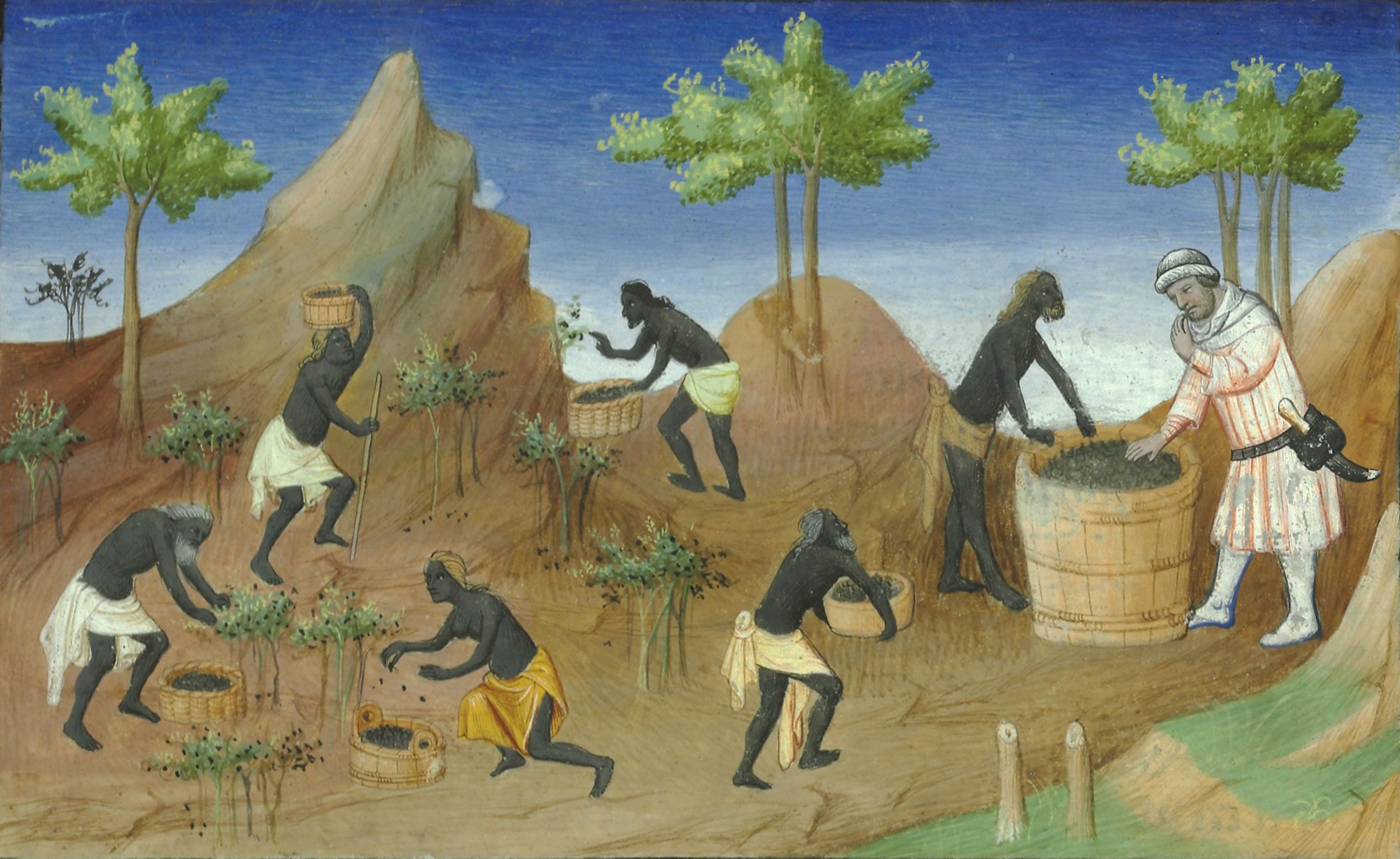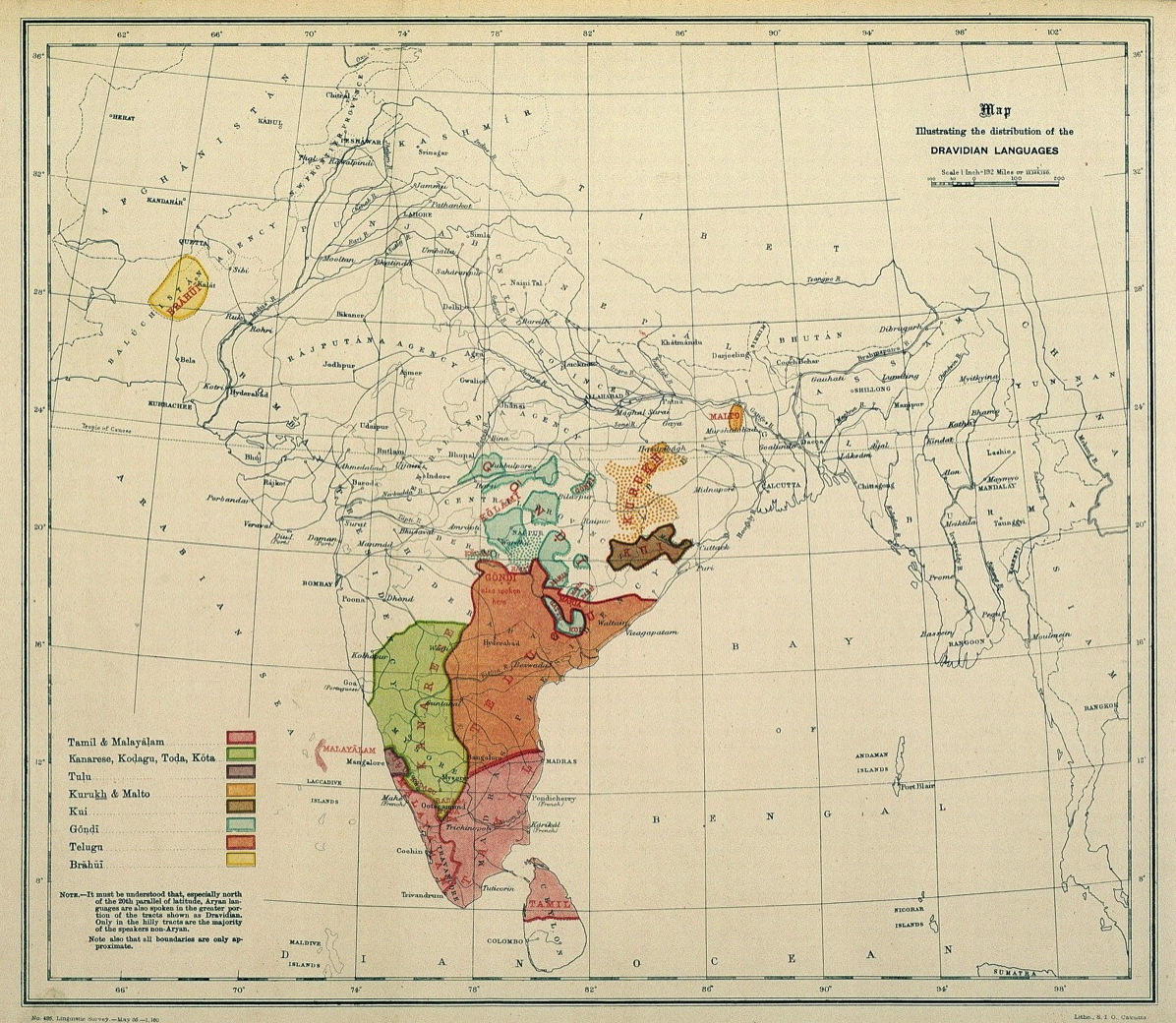|
Curry
A curry is a dish with a sauce seasoned with spices, mainly associated with South Asian cuisine. In southern India, leaves from the curry tree may be included. There are many varieties of curry. The choice of spices for each dish in traditional cuisine depends on regional cultural tradition and personal preferences. Such dishes have names that refer to their ingredients, spicing, and cooking methods. Outside the Indian subcontinent, a curry is a dish from Southeast Asia which uses coconut milk or spice pastes, commonly eaten over rice. Curries may contain fish, meat, poultry, or shellfish, either alone or in combination with vegetables. Others are vegetarian. Dry curries are cooked using small amounts of liquid, which is allowed to evaporate, leaving the other ingredients coated with the spice mixture. Wet curries contain significant amounts of sauce or gravy based on broth, coconut cream or coconut milk, dairy cream or yogurt, or legume purée, sautéed crushed onio ... [...More Info...] [...Related Items...] OR: [Wikipedia] [Google] [Baidu] |
Curry Powder
Curry powder is a spice mix originating from the Indian subcontinent where it is typically called garam masala. History Key ingredients of curry powder consist of ginger, garlic, fennel, mace, cumin, coriander, cardamom, cinnamon and turmeric and have been in use for over 4000 years, at least since the Indus Valley civilization. As commercially available in Western markets, curry powder is comparable to the traditional Indian concoction of spices known as "garam masala". Conceived as a ready-made ingredient intended to replicate the flavor of an Indian sauce, it was first sold by Indian merchants to British traders. Curry powder was used as an ingredient in 18th century British recipe books, and commercially available from the late 18th century, with brands such as Crosse & Blackwell and Sharwood's persisting to the present. The ingredient "curry powder", along with instructions on how to produce it, are also seen in 19th Century US and Australian cookbooks, and advertise ... [...More Info...] [...Related Items...] OR: [Wikipedia] [Google] [Baidu] |
Hannah Glasse
Hannah Glasse (; March 1708 – 1 September 1770) was an English cookery writer of the 18th century. Her first cookery book, '' The Art of Cookery Made Plain and Easy'', published in 1747, became the best-selling recipe book that century. It was reprinted within its first year of publication, appeared in 20 editions in the 18th century, and continued to be published until well into the 19th century. She later wrote ''The Servants' Directory'' (1760) and ''The Compleat Confectioner'', which was probably published in 1760; neither book was as commercially successful as her first. Glasse was born in London to a Northumberland landowner and his mistress. After the relationship ended, Glasse was brought up in her father's family. When she was 16 she eloped with a 30-year-old Irish subaltern then on half-pay and lived in Essex, working on the estate of the Earls of Donegall. The couple struggled financially and, with the aim of raising money, Glasse wrote ''The Art of Cookery''. ... [...More Info...] [...Related Items...] OR: [Wikipedia] [Google] [Baidu] |
The Art Of Cookery Made Plain And Easy
''The Art of Cookery Made Plain and Easy'' is a cookbook by Hannah Glasse (1708–1770) first published in 1747. It was a bestseller for a century after its first publication, dominating the English-speaking market and making Glasse one of the most famous cookbook authors of her time. The book ran through at least 40 editions, many of which were copied without explicit author consent. It was published in Dublin from 1748, and in America from 1805. Glasse said in her note "To the Reader" that she used plain language so that servants would be able to understand it. The 1751 edition was the first book to mention trifle with jelly as an ingredient; the 1758 edition gave the first mention of " Hamburgh sausages", piccalilli, and one of the first recipes in English for an Indian-style curry. Glasse criticised French influence of British cuisine, but included dishes with French names and French influence in the book. Other recipes use imported ingredients including cocoa, cinnamon ... [...More Info...] [...Related Items...] OR: [Wikipedia] [Google] [Baidu] |
Ghee
Ghee is a type of clarified butter, originating from India. It is commonly used in India for cooking, as a traditional medicine, and for religious rituals. Description Ghee is typically prepared by simmering butter, which is churned from cream (traditionally made by churning the topmost layer of curd, which is also called the ''Bilona'' method), skimming any impurities from the surface, then pouring and retaining the clear liquid fat while discarding the solid residue that has settled to the bottom. Spices can be added for flavor. The texture, color, and taste of ghee depend on the quality of the butter, the milk source used in the process, and the duration of boiling time. Etymology The word ''ghee'' comes from sa, घृत (', ) 'clarified butter', from ''ghṛ-'' 'to sprinkle'. In Dravidian languages, it is also known as te, నెయ్యి '('neyyi''), ta, நெய் or துப்பகம் (''tuppakam''), ml, നെയ്യ് (''ney'') and kn, � ... [...More Info...] [...Related Items...] OR: [Wikipedia] [Google] [Baidu] |
Garam Masala
Garam masala Hindustani / (''garm masala'', "hot spices")] is a Spice mix, blend of ground spices originating from India. It is common in Indian, Pakistani, Nepalese, Bangladeshi, Sri Lankan and Caribbean cuisines. It is used alone or with other seasonings. Ingredients The composition of garam masala differs regionally, with many recipes across the Indian subcontinent according to regional and personal taste, and none is considered more authentic than another. The components of the mix are roasted, then ground together or added to the dish for flavour just before finishing cooking. A typical Indian version of garam masala contains (with Hindi/Urdu names in parenthesis): * Fennel (''saunf'') * Bay leaves (''tej patta'') * Black and white peppercorns (''kali/safed mirch'') * Cloves (''laung'') * Cinnamon or cassia bark (''dālacini'') * Mace (outer covering of nutmeg) (''javitri)'' * Black and green cardamom pods (''ilaici'') * Cumin (''jīra'') * Coriander seeds (''dha ... [...More Info...] [...Related Items...] OR: [Wikipedia] [Google] [Baidu] |
South India
South India, also known as Dakshina Bharata or Peninsular India, consists of the peninsular southern part of India. It encompasses the States and union territories of India, Indian states of Andhra Pradesh, Karnataka, Kerala, Tamil Nadu, and Telangana, as well as the union territory, union territories of Lakshadweep and Puducherry (union territory), Puducherry, comprising 19.31% of India's area () and 20% of India's population. Covering the southern part of the peninsular Deccan Plateau, South India is bounded by the Bay of Bengal in the east, the Arabian Sea in the west and the Indian Ocean in the south. The geography of the region is diverse with two mountain ranges – the Western Ghats, Western and Eastern Ghats – bordering the plateau heartland. The Godavari River, Godavari, Krishna River, Krishna, Kaveri, Tungabhadra River, Tungabhadra, Periyar River, Periyar, Bharathappuzha, Pamba River, Pamba, Thamirabarani River, Thamirabarani, Palar River, Palar, and Vaigai River, Va ... [...More Info...] [...Related Items...] OR: [Wikipedia] [Google] [Baidu] |
Spices
A spice is a seed, fruit, root, bark, or other plant substance primarily used for flavoring or coloring food. Spices are distinguished from herbs, which are the leaves, flowers, or stems of plants used for flavoring or as a garnish. Spices are sometimes used in medicine, religious rituals, cosmetics or perfume production. For example, vanilla is commonly used as an ingredient in fragrance manufacturing. A spice may be available in several forms: fresh, whole dried, or pre-ground dried. Generally, spices are dried. Spices may be ground into a powder for convenience. A whole dried spice has the longest shelf life, so it can be purchased and stored in larger amounts, making it cheaper on a per-serving basis. A fresh spice, such as ginger, is usually more flavorful than its dried form, but fresh spices are more expensive and have a much shorter shelf life. Some spices are not always available either fresh or whole, for example turmeric, and often must be purchased in ground fo ... [...More Info...] [...Related Items...] OR: [Wikipedia] [Google] [Baidu] |
Cuire
Caluire-et-Cuire (; frp, Caluéres-et-Cuéres) is a commune in the Metropolis of Lyon in Auvergne-Rhône-Alpes region in eastern France. It is the fifth-largest suburb of the city of Lyon, and lies 4 km north-by-east of Lyon. Population Neighbourhoods * Le Bourg * Vassieux * Cuire-le-Bas (quarter) * Cuire-le-Haut (quarter) * Saint-Clair * Le Vernay * Montessuy * Bissardon See also * Parc Saint-Clair is a public greenspace in the quarter of Saint-Clair in the commune Caluire-et-Cuire near Lyon. The park has an area of , is bordered by the Rhône to the south and the to the north and east. It was designed by landscape architect Alain Provo ... References External links Town council website(in French) {{DEFAULTSORT:Caluireetcuire Communes of Lyon Metropolis Lyonnais ... [...More Info...] [...Related Items...] OR: [Wikipedia] [Google] [Baidu] |
The Forme Of Cury
''The Forme of Cury'' (''The Method of Cooking'', from Middle French : 'to cook') is an extensive 14th-century collection of medieval English recipes. Although the original manuscript is lost, the text appears in nine manuscripts, the most famous in the form of a scroll with a headnote citing it as the work of "the chief Master Cooks of King Richard II". The name ''The Forme of Cury'' is generally used for the family of recipes rather than any single manuscript text. It is among the oldest extant English cookery books, and the earliest known to mention olive oil, gourds, and spices such as mace and cloves. Context The collection was named ''The Forme of Cury'' by Samuel Pegge, who published an edition of one of the manuscripts in 1780 for a trustee of the British Museum, Gustavus Brander. It is one of the best-known medieval guides to cooking. ''The Forme of Cury'' may have been written partly to compete with '' Le Viandier of Taillevent'', a French cookery bo ... [...More Info...] [...Related Items...] OR: [Wikipedia] [Google] [Baidu] |
Dravidian Languages
The Dravidian languages (or sometimes Dravidic) are a family of languages spoken by 250 million people, mainly in southern India, north-east Sri Lanka, and south-west Pakistan. Since the colonial era, there have been small but significant immigrant communities in Mauritius, Myanmar, Singapore, Malaysia, Indonesia, Philippines, United Kingdom, Australia, France, Canada, Germany, South Africa, and the United States. The Dravidian languages are first attested in the 2nd century BCE, as Tamil-Brahmi script, inscribed on the cave walls in the Madurai and Tirunelveli districts of Tamil Nadu. The Dravidian languages with the most speakers are (in descending order of number of speakers) Telugu, Tamil, Kannada and Malayalam, all of which have long literary traditions. Smaller literary languages are Tulu and Kodava. There are also a number of Dravidian-speaking scheduled tribes, such as the Kurukh in Eastern India and Gondi in Central India. Outside of India, Brahui is mos ... [...More Info...] [...Related Items...] OR: [Wikipedia] [Google] [Baidu] |
Coromandel Coast
The Coromandel Coast is the southeastern coastal region of the Indian subcontinent, bounded by the Utkal Plains to the north, the Bay of Bengal to the east, the Kaveri delta to the south, and the Eastern Ghats to the west, extending over an area of about 22,800 square kilometres. The coast has an average elevation of 80 metres and is backed by the Eastern Ghats, a chain of low lying and flat-topped hills. In historical Muslim sources from the 12th century onward, the Coromandel Coast was called Maʿbar. Etymology The land of the Chola dynasty was called ''Cholamandalam'' (சோழ மண்டலம்) in Tamil, translated as ''The realm of the Cholas'', from which the Portuguese derived the name ''Coromandel''.''The Land of the Tamulians and Its Missions'', by Eduard Raimund Baierlein, James Dunning BakerSouth Indian Coins – Page 61 by T. Desikachari – Coins, Indic – 1984Indian History – Page 112''Annals of Oriental Research'' – Page 1 by University of Madras ... [...More Info...] [...Related Items...] OR: [Wikipedia] [Google] [Baidu] |






